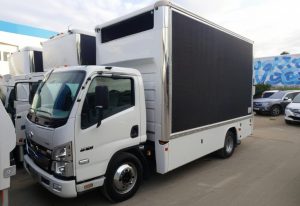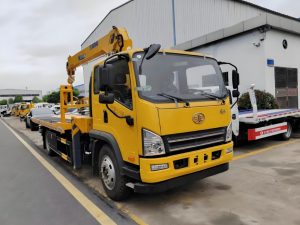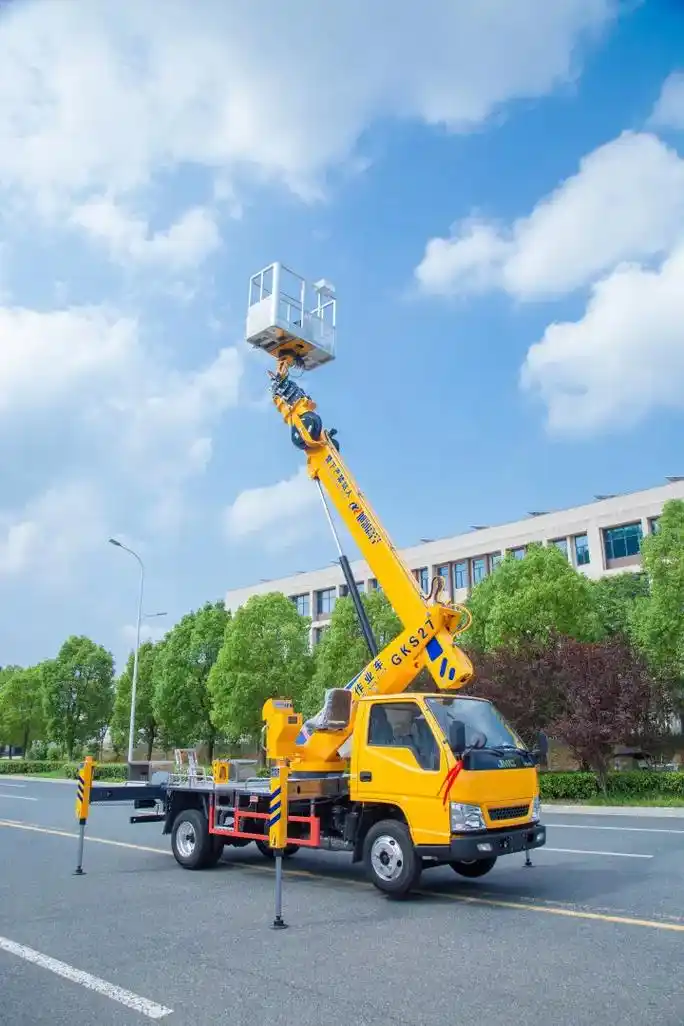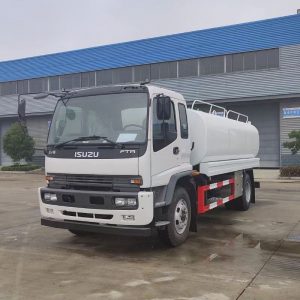Table of Contents
Toggle
Introduction
When you’re driving down the street, have you ever noticed those trucks with whirling brushes and powerful vacuums cleaning up the mess? Yep, those are road sweeper trucks! They’re the unsung heroes keeping our streets clean, safe, and visually appealing. But what exactly goes into these marvelous machines, and why are they so essential? Let’s dive into the fascinating world of road sweeper trucks!
What is a Road Sweeper Truck?
A road sweeper truck, often referred to simply as a street sweeper, is a vehicle designed to clean streets, roads, and other paved surfaces. These trucks are equipped with specialized equipment to remove debris, dust, and litter, ensuring that urban environments remain clean and safe for all.
History of Road Sweeper Trucks
Early Beginnings
Believe it or not, the concept of street sweeping dates back to ancient civilizations where brooms were manually used to keep streets tidy. Fast forward to the 19th century, the first mechanical street sweepers appeared in the United States, thanks to the ingenuity of C.S. Bishop who patented the first design in 1849. These early models were horse-drawn and relied on basic mechanical brushes to get the job done.
Before C.S. Bishop’s invention, street cleanliness was maintained manually by workers using simple brooms. This method was labor-intensive and inefficient, especially in rapidly growing urban areas. Bishop’s mechanical street sweeper revolutionized the way streets were cleaned, allowing for more efficient and effective removal of debris.
Modern Innovations
Today’s road sweeper trucks are marvels of engineering, incorporating advanced technologies such as vacuum systems, water sprayers, and even regenerative air systems to ensure maximum efficiency and cleanliness. With the integration of modern electronics and hydraulics, these machines have become indispensable tools for urban maintenance.
Modern road sweepers are often equipped with sophisticated control systems that allow operators to adjust settings on-the-fly, ensuring optimal performance in various conditions. For example, sensors can detect the amount of debris being collected and adjust brush speed and suction power accordingly. Some sweepers even feature GPS tracking and telematics systems to monitor their performance and maintenance needs in real-time.
Types of Road Sweeper Trucks
There are several types of road sweeper trucks, each designed to handle specific cleaning tasks and environments. Let’s take a closer look at the most common types:
Mechanical Broom Sweepers
These are the traditional workhorses of street cleaning, using rotating brushes to sweep debris into a collection hopper. They’re especially effective for removing heavy and compacted debris like gravel or sand.
Mechanical broom sweepers are often used in areas with heavy industrial activity or construction sites where larger debris is common. The robust brushes can handle tough materials and ensure thorough cleaning even on rough surfaces. Additionally, these sweepers are relatively simple in design, making them easy to maintain and repair.
Vacuum Sweepers
Think of these as giant vacuum cleaners on wheels! They use powerful suction to draw debris off the street and into a storage compartment. Ideal for areas with lots of fine dust and smaller particles, vacuum sweepers ensure a thorough clean.
Vacuum sweepers are particularly effective in urban areas with high levels of foot traffic where fine dust and litter accumulate quickly. The suction mechanism can capture even the tiniest particles, preventing them from becoming airborne and reducing air pollution. These sweepers are also quieter than mechanical broom sweepers, making them suitable for use in residential neighborhoods and during nighttime operations.
Regenerative Air Sweepers
Combining the best of both worlds, regenerative air sweepers use a blast of air to dislodge debris before vacuuming it up. This method is incredibly efficient and minimizes dust emissions, making it an eco-friendly option.
Regenerative air sweepers are designed to minimize environmental impact while providing excellent cleaning performance. The air blast helps to loosen debris from the road surface without damaging it, and the vacuum system ensures that all particles are collected efficiently. These sweepers are ideal for municipalities looking to reduce their carbon footprint and improve air quality in urban areas.
Key Features and Components
Road sweeper trucks are complex machines with several key features and components that work together to ensure effective street cleaning. Let’s explore some of these critical elements:
Brushes and Brooms
The brushes are the heart of any sweeper truck, coming in various sizes and materials to tackle different types of debris. Some trucks even have side brushes to reach curb edges and tight spots!
Brushes can be made from various materials such as steel wire, polypropylene, or a combination of both. Steel wire brushes are durable and can handle tough debris, while polypropylene brushes are gentler on road surfaces and more effective at capturing fine particles. Side brushes are often adjustable to ensure they can reach every nook and cranny along curbsides and gutters.
Suction Systems
The vacuum system is crucial for picking up fine particles that brooms might miss. These systems often feature high-powered fans and filters to ensure effective suction without clogging or losing power.
Modern suction systems are designed to be highly efficient while minimizing noise and energy consumption. High-powered fans generate strong airflow to lift debris from the road surface, while advanced filtration systems capture dust and prevent it from being released back into the environment. Some sweepers also feature multi-stage filtration systems that can remove even the smallest particles from the air.
Water Systems
To control dust and improve sweeping efficiency, many road sweepers are equipped with water sprayers that dampen the road surface before sweeping begins. This not only keeps the dust down but also helps to gather more debris in one go.
Water systems typically include tanks that hold clean water and pumps that spray a fine mist onto the road surface ahead of the brushes. The water helps to bind dust particles together, making them easier to collect. Some sweepers also have recycling systems that filter and reuse water, reducing overall water consumption.
Hopper and Disposal Mechanism
All the collected debris needs to go somewhere, right? That’s where the hopper comes in! This storage compartment holds all the dirt until it can be disposed of at a designated facility. Modern hoppers often feature hydraulic lifts for easy unloading.
Hoppers are designed to be durable and corrosion-resistant to withstand the harsh conditions they encounter daily. They come in various sizes depending on the sweeper’s capacity requirements. Hydraulic lifts allow operators to easily empty the hopper into larger containers or directly onto conveyor belts for further processing at disposal sites.

How Road Sweeper Trucks Work
Understanding how road sweeper trucks operate can be quite fascinating. These machines combine mechanical, hydraulic, and electronic systems to ensure thorough and efficient street cleaning. Let’s break down the cleaning process and waste management steps:
The Cleaning Process
Picture this: The truck moves along the street, its brushes spinning furiously to sweep debris towards the center where a powerful vacuum awaits. The water system sprays a fine mist to keep dust under control while the suction system pulls everything into the hopper. It’s like watching a well-choreographed dance!
- Initial Water Spray: As the sweeper truck begins its operation, water nozzles spray a fine mist onto the road surface. This initial spray helps to settle dust and small particles, making them easier to collect.
- Brushes in Action: The main brushes, usually located under the truck, rotate rapidly to sweep debris towards the center. Side brushes extend to clean curbs and tight spots, ensuring no area is left untouched.
- Suction System: Positioned behind the main brushes, the suction system uses high-powered fans to create a vacuum that lifts debris off the ground and into the hopper. Advanced filters ensure that fine particles are captured and not released back into the environment.
- Continuous Water Spraying: Throughout the process, water is continuously sprayed to keep dust levels down and improve sweeping efficiency. This step is crucial for maintaining air quality and preventing dust clouds.
Waste Collection and Disposal
Once the hopper is full, it’s time to unload! The truck drives to a disposal site where the hopper is lifted hydraulically, tipping out all the collected waste into a larger container or directly onto a conveyor belt for further processing. Easy peasy!
- Hopper Monitoring: Operators monitor the fill level of the hopper using sensors or manual checks. Once it reaches capacity, the truck is driven to a designated disposal site.
- Hydraulic Lifting: At the disposal site, hydraulic systems lift the hopper, tilting it to empty its contents into a larger container or onto a conveyor belt.
- Disposal or Recycling: The collected waste is then either disposed of at landfill sites or sent for recycling, depending on local regulations and the type of debris collected.
- Cleaning and Maintenance: After emptying the hopper, operators often clean it to prevent odors and contamination. Regular maintenance checks are also performed to ensure all systems are functioning correctly.
Benefits of Using Road Sweeper Trucks
Road sweeper trucks offer numerous advantages that go beyond just keeping streets clean. Let’s explore some of these benefits:
Environmental Benefits
By removing litter and debris from our streets, road sweepers play a vital role in preventing pollution from entering our waterways and ecosystems. They also reduce airborne dust particles, contributing to better air quality in urban areas.
- Waterway Protection: Debris collected by sweepers includes litter, leaves, and other pollutants that could otherwise wash into storm drains and contaminate rivers, lakes, and oceans.
- Air Quality Improvement: By capturing dust and fine particles, road sweepers help reduce air pollution, leading to healthier urban environments.
- Waste Management: Some modern sweepers are designed to separate recyclable materials from general waste, promoting recycling and reducing landfill use.
Safety and Health Benefits
Clean streets mean fewer hazards for drivers, cyclists, and pedestrians alike. Plus, by removing potentially harmful materials like broken glass or metal shards, road sweepers help reduce the risk of injuries and accidents.
- Hazard Removal: Regular street cleaning ensures that dangerous debris such as broken glass, nails, and sharp objects are removed promptly.
- Slip Prevention: By removing leaves and other slippery materials, sweepers help prevent accidents caused by slipping on wet or decaying matter.
- Health Improvement: Reduced dust levels contribute to better respiratory health for residents, especially those with allergies or asthma.
Aesthetic and Urban Appeal
There’s no denying that clean streets look nicer! Regular sweeping helps maintain the aesthetic appeal of urban areas, making them more pleasant places to live, work, and visit. It’s all about that curb appeal!
- Improved Urban Environment: Clean streets enhance the overall appearance of neighborhoods, attracting businesses and tourists.
- Community Pride: Residents feel a sense of pride in their community when their surroundings are well-maintained.
- Property Value: Well-maintained streets can positively impact property values by creating a more attractive living environment.
Challenges and Considerations
While road sweeper trucks offer numerous benefits, they also come with their own set of challenges and considerations:
Operational Costs
Running a fleet of road sweepers isn’t cheap! Fuel costs, operator salaries, and maintenance expenses can add up quickly, making it essential for municipalities to budget carefully and seek cost-effective solutions wherever possible.
- Fuel Expenses: Traditional road sweepers often rely on diesel engines, which can be costly to fuel and maintain.
- Labor Costs: Skilled operators are needed to handle these complex machines effectively, adding to overall labor costs.
- Maintenance Expenses: Regular maintenance is crucial to keep sweepers in good working condition, leading to ongoing expenses for parts and labor.
Maintenance Requirements
These machines work hard day in and day out, so regular maintenance is crucial to keep them running smoothly. From replacing worn brushes to checking hydraulic systems, there’s always something that needs attention!
- Brush Replacement: Brushes wear out over time and need regular replacement to ensure effective sweeping.
- Hydraulic System Checks: Hydraulic systems must be inspected regularly to prevent leaks and ensure smooth operation.
- Engine Maintenance: Like any vehicle, road sweepers require routine engine maintenance to stay reliable.
- Filter Cleaning/Replacement: Suction systems often have filters that need cleaning or replacement to maintain efficiency.
Future Trends in Road Sweeping Technology
The future of road sweeping technology is bright with innovations aimed at improving efficiency, reducing environmental impact, and integrating advanced technologies:
Automation and AI Integration
The future is here, folks! With advancements in automation and artificial intelligence, we’re seeing the development of autonomous road sweepers that can operate without human intervention. Imagine fleets of self-driving sweepers patrolling our streets day and night – pretty cool, right?
- Autonomous Operation: Self-driving sweepers can operate around the clock without the need for breaks or shift changes.
- AI-Powered Efficiency: AI algorithms can optimize routes in real-time based on traffic conditions and debris levels.
- Safety Enhancements: Autonomous systems can include advanced sensors and cameras to detect obstacles and avoid accidents.
Eco-friendly Innovations
As environmental concerns continue to grow, so does the push for greener technology in road sweeping. From electric-powered sweepers to solar panels powering auxiliary systems, the future looks bright (and clean)!
- Electric Sweepers: Electric-powered sweepers produce zero emissions during operation, reducing their environmental impact.
- Solar Integration: Solar panels can be used to power auxiliary systems such as water pumps or lighting.
- Recycling Systems: Future sweepers may include advanced sorting systems to separate recyclable materials from general waste automatically.
Conclusion
Road sweeper trucks may not be glamorous, but they’re absolutely essential for maintaining clean, safe, and attractive urban environments. With their rich history, diverse types, advanced features, and promising future innovations, these machines deserve a little more recognition for all they do behind the scenes. Next time you see one cruising down your street, give it a nod of appreciation – after all, it’s working hard to keep your world clean!
The Unsung Heroes
It’s easy to overlook the importance of road sweeper trucks when we go about our daily lives. However, these machines are the unsung heroes that ensure our cities remain livable and pleasant. Without them, our streets would quickly become cluttered with debris, leading to a host of environmental, safety, and aesthetic issues.
Continued Innovation
As technology continues to advance, we can expect even more exciting developments in the world of road sweeping. From autonomous vehicles to eco-friendly innovations, the future holds great promise for making our streets cleaner and greener. Municipalities and private companies alike are investing in research and development to create the next generation of road sweeper trucks that will be more efficient, cost-effective, and environmentally friendly.
Community Impact
Beyond their practical benefits, road sweeper trucks also play a crucial role in fostering a sense of community pride. Clean streets contribute to the overall well-being of residents, making neighborhoods more inviting and enjoyable places to live. By investing in regular street cleaning, cities can enhance the quality of life for their inhabitants and create a positive image that attracts visitors and businesses.
A Call to Action
So, what can we do to support the efforts of road sweeper trucks and the people who operate them? For starters, we can be more mindful of our own actions by properly disposing of litter and reducing waste. Additionally, advocating for sustainable practices and supporting initiatives that promote clean streets can make a significant difference.
Next time you see a road sweeper truck at work, take a moment to appreciate the vital service it provides. These machines may operate quietly in the background, but their impact on our communities is profound. Let’s celebrate the humble road sweeper truck and the essential role it plays in keeping our world clean and beautiful.







